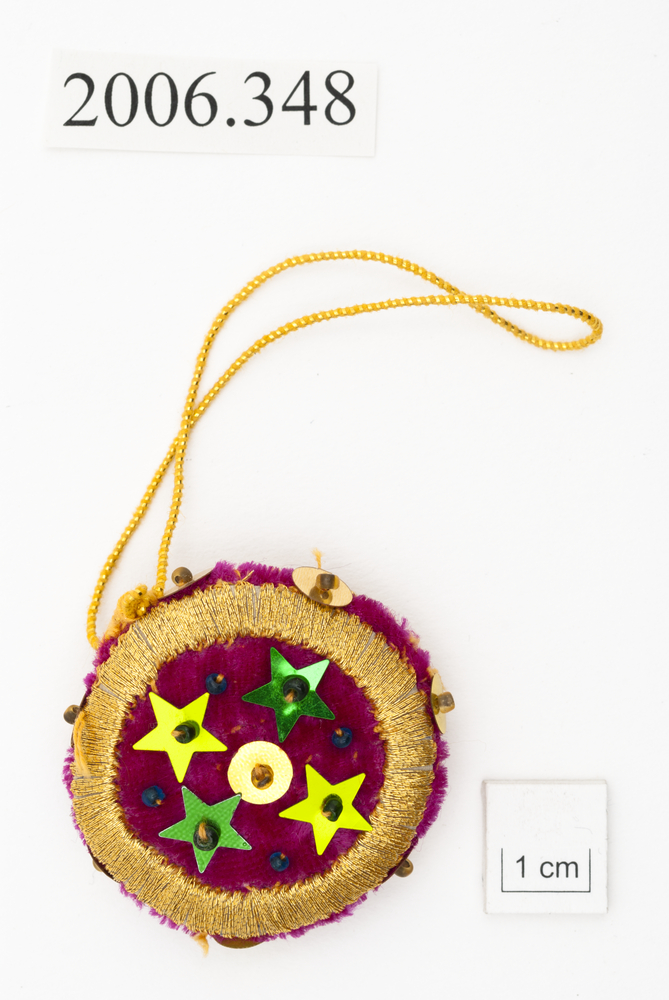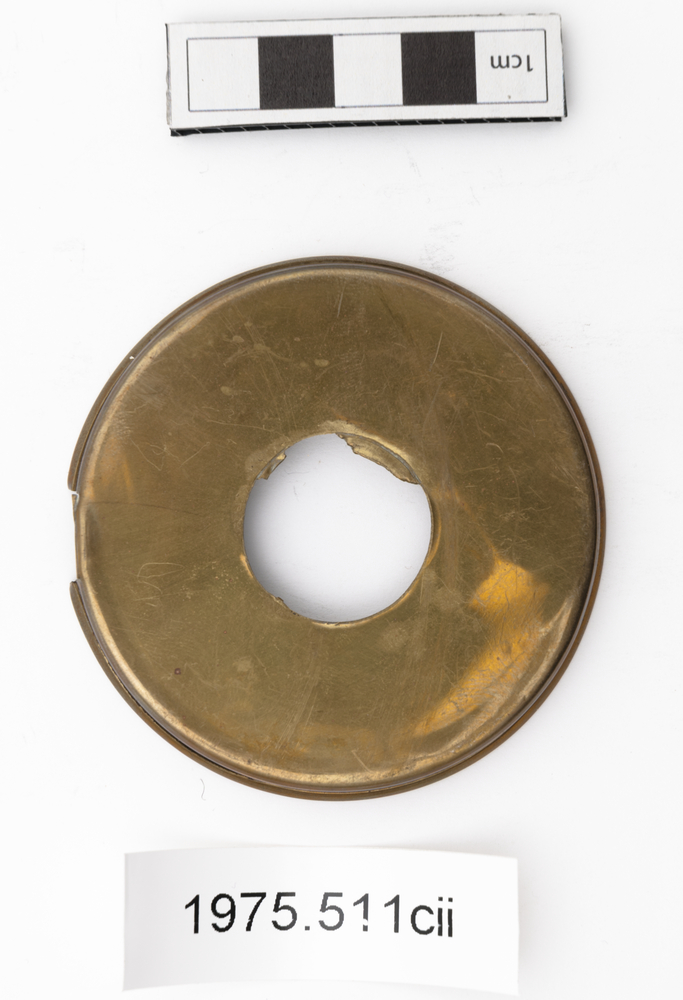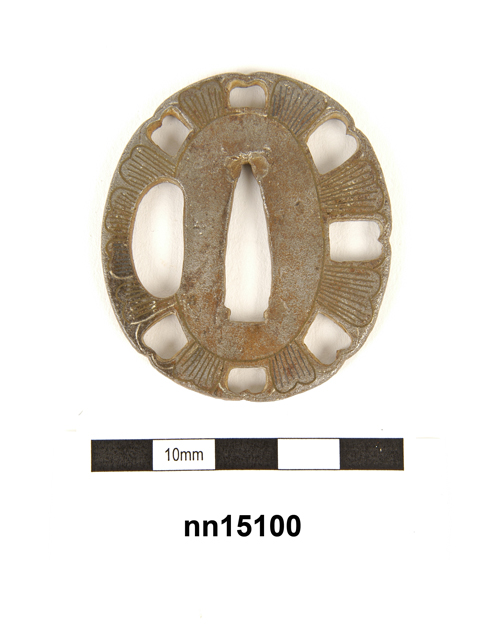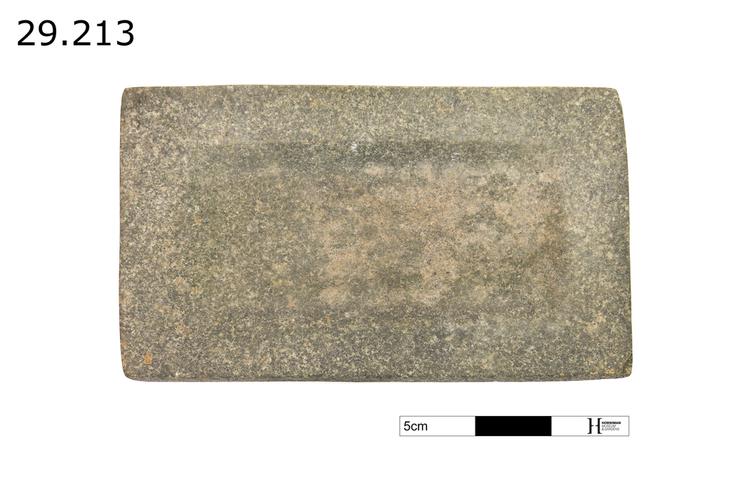



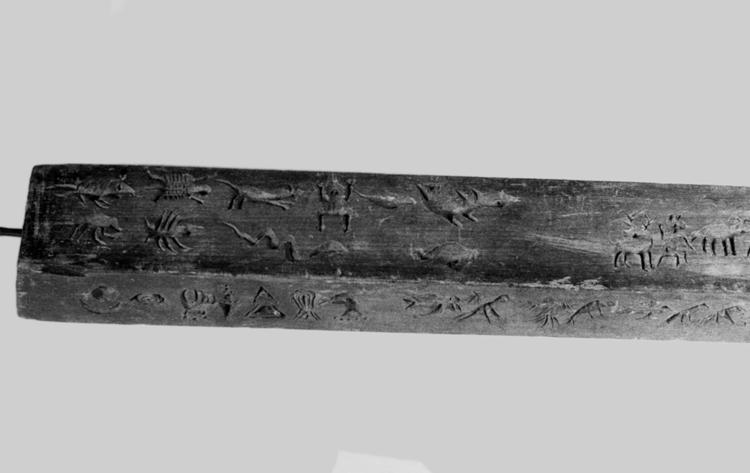
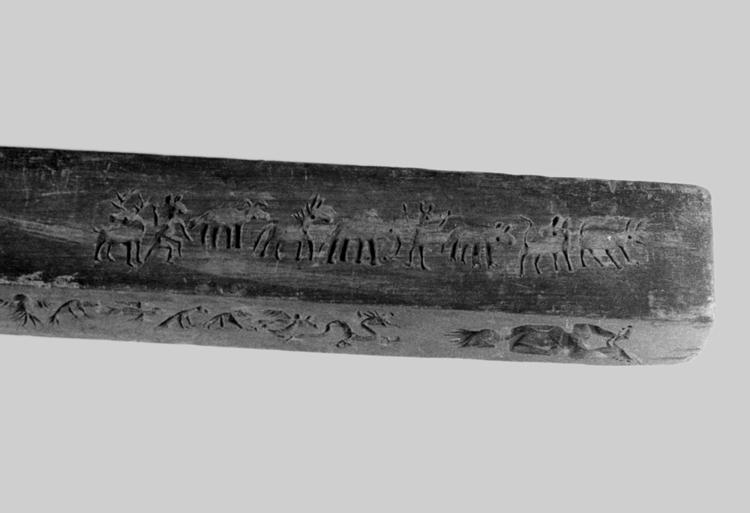
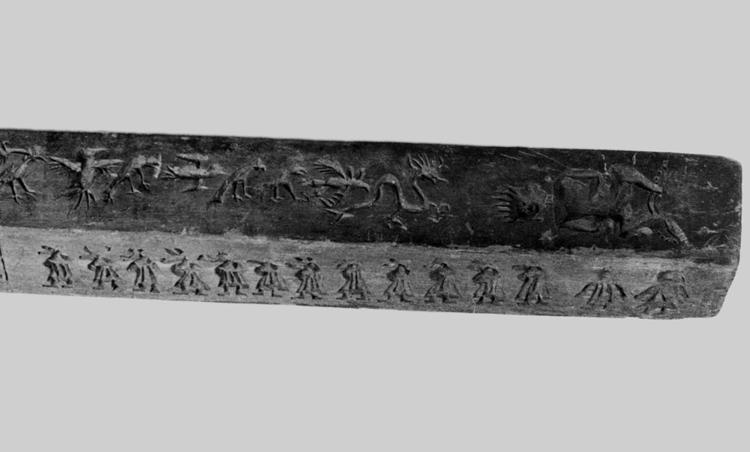
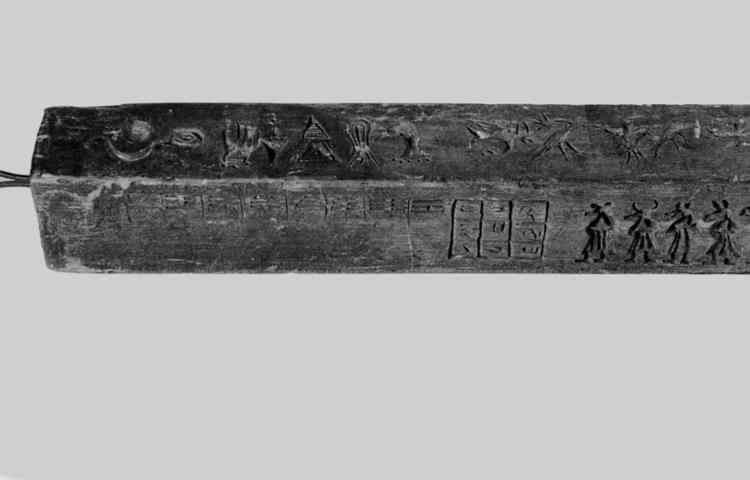
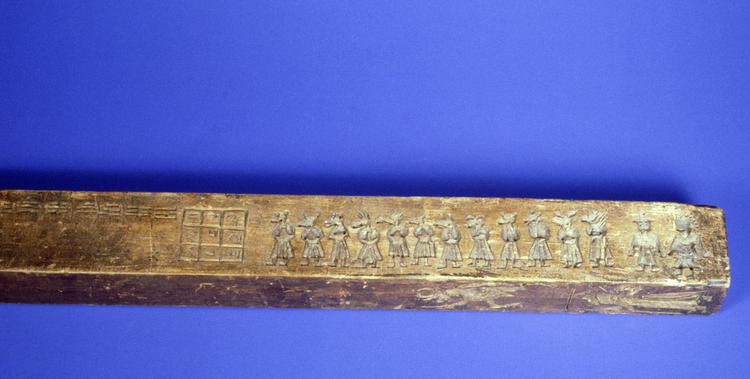
Long, rectangular wooden mould for making dough figures or 'zan par'. Carved with figures of people, deities, spirits and animals as well as symbols. A metal loop is attached at one end.
This object is a mould or zan par used to produce small effigies in dough made from barley flour (rtsam pa). In Tibetan Buddhism zan par effigies are given as offerings to propitiate evil spirits or to please deities. The origins of zan par lie in the religious practices followed in Tibet before the conversion of the region to Buddhism (in the eighth century CE). The pre Buddhist faith demanded sacrifices to appease the spirit world. The sacrificial animal (or in some cases human) would act as a scapegoat (glud) or offering to the deities. Living sacrifices are contrary to Buddhist teachings so zan par effigies represent an adaptation of the pre Buddhist idea of the glud to Buddhist mores. As is the case for many ritual objects in Tibetan Buddhism the way in which zan par effigies are made is very important. Producing zan par effigies is understood to be a devotional act, and therefore requires right motivation and spiritual preparation. During manufacture the appropriate prayers are recited. Often, in order to prevent contamination the monk or craftsman creating the effigies wears a mask over his mouth. The zan par mould itself is coated with butter and rtsam pa dough is then pressed into the mould to create the miniature images. The flour is consecrated before use, auspicious ingredients often being added to please the deity being propitiated (sweet substances for peaceful deities, spicier ingredients for wrathful ones). The Horniman zan par has a piece of metal (rin chen bdar) attached which consists of an alloy of the five precious metals (rin chen lnga), gold, silver, copper, brass and iron. During the preparation of the dough a little metal powder is filed off into the rtsam pa mixture, thus representing the treasures being offered to the deity. Zan par effigies are often given as offerings in the hope of overcoming obstacles. These obstacles could be metaphysical issues such as obstructions in the path to enlightenment or economic challenges such as crop failure. We have had some of the symbols and figures on the Horniman zan par identified: The side of the zan par illustrated in the first image is carved with the days of the week (together with Rahu the planetary deity) and then creatures that fly in the sky after which is a shackled figure representing one who is trapped in a sickness (although this figure could also be used as a charm to protect from negative influences). The next side shows the creatures that live underground followed by those that walk on the earth. The following side bears carvings of two figures, one of which is a lama in ritual dress.



